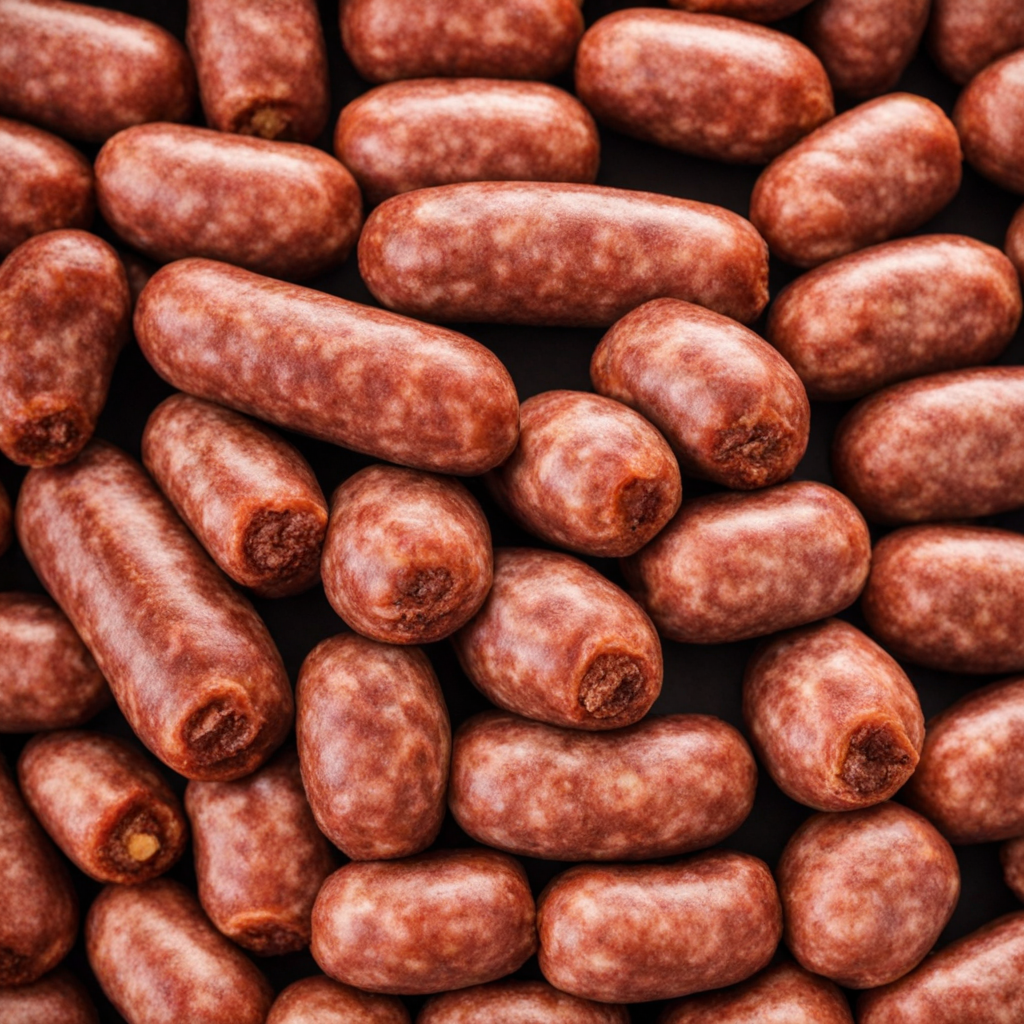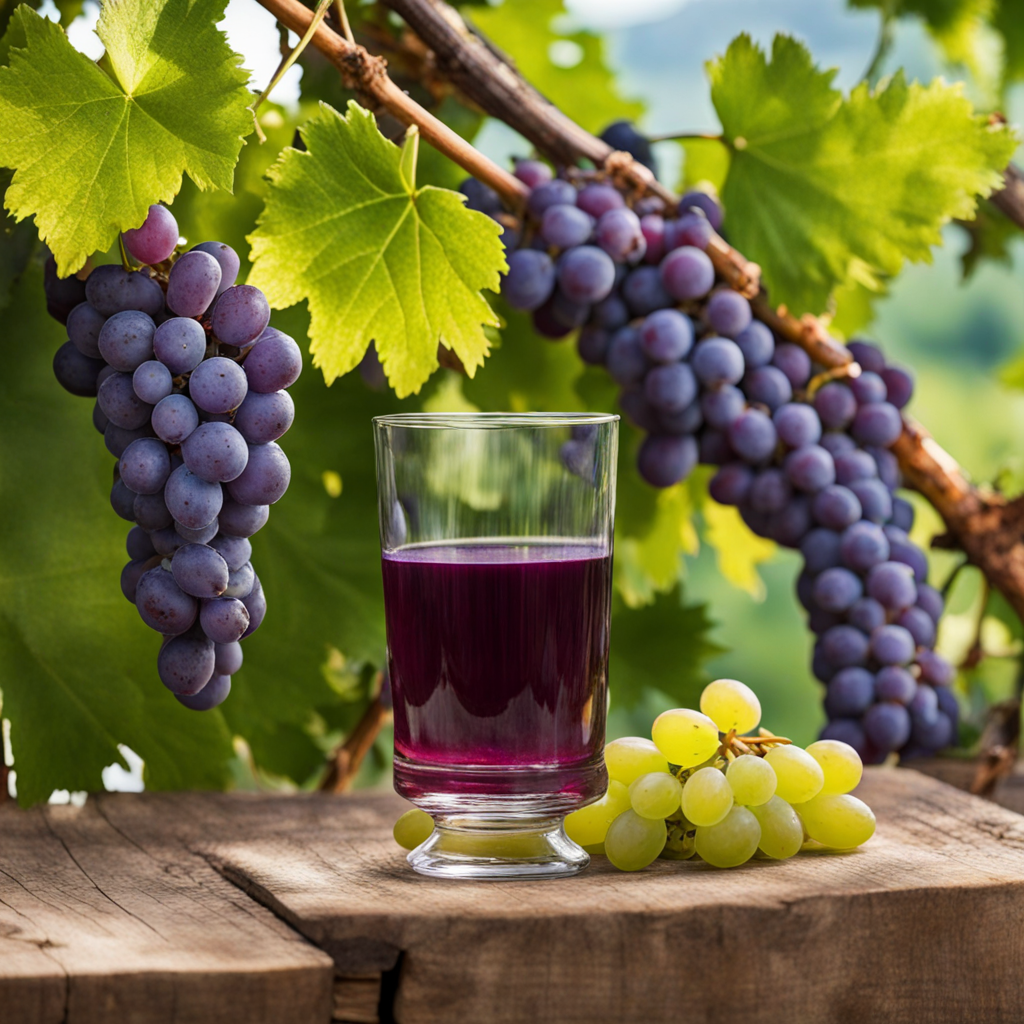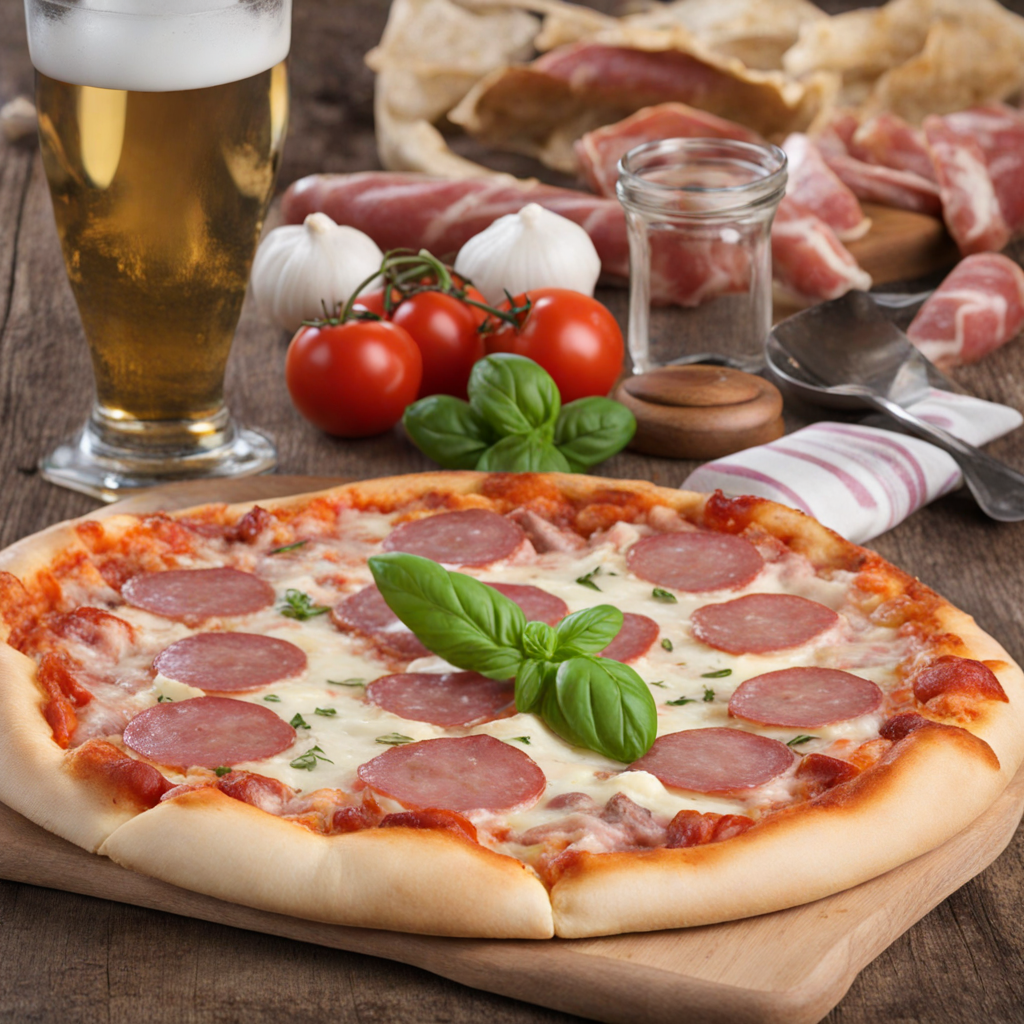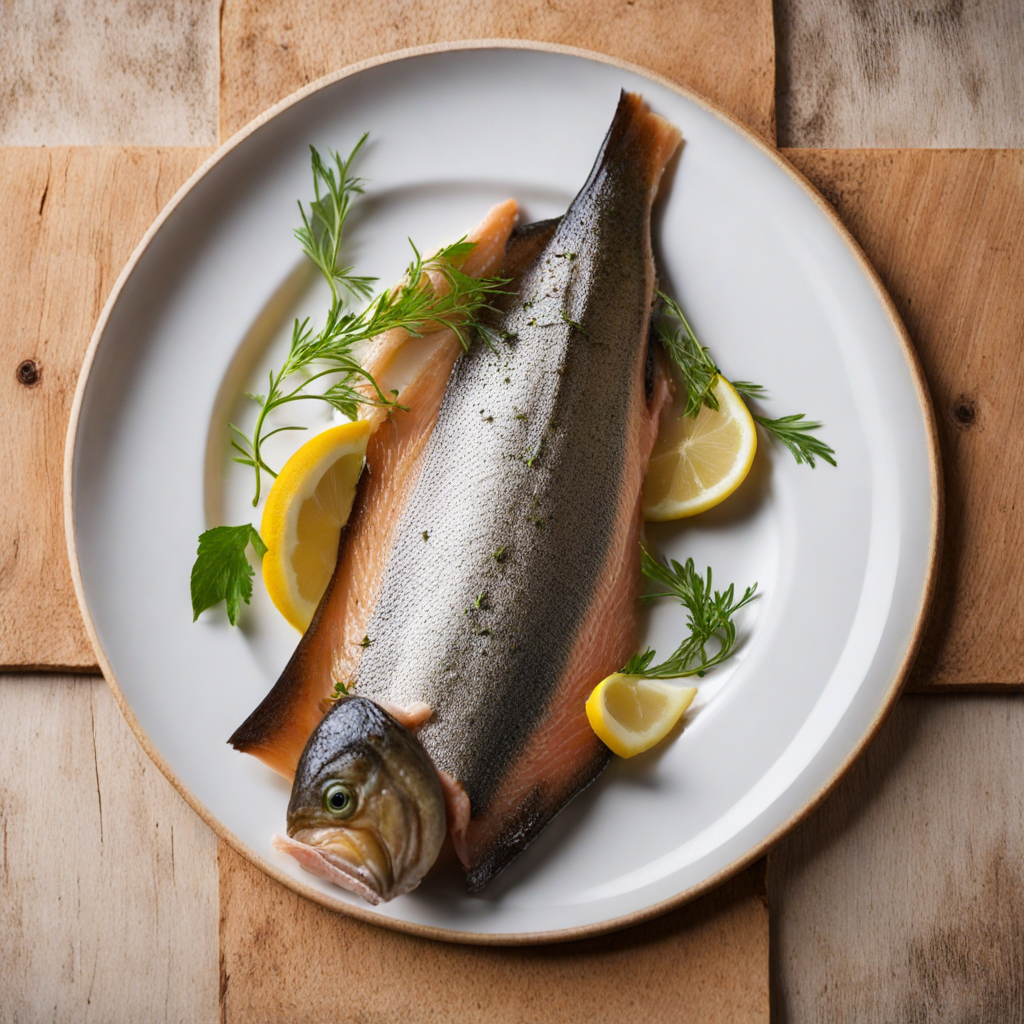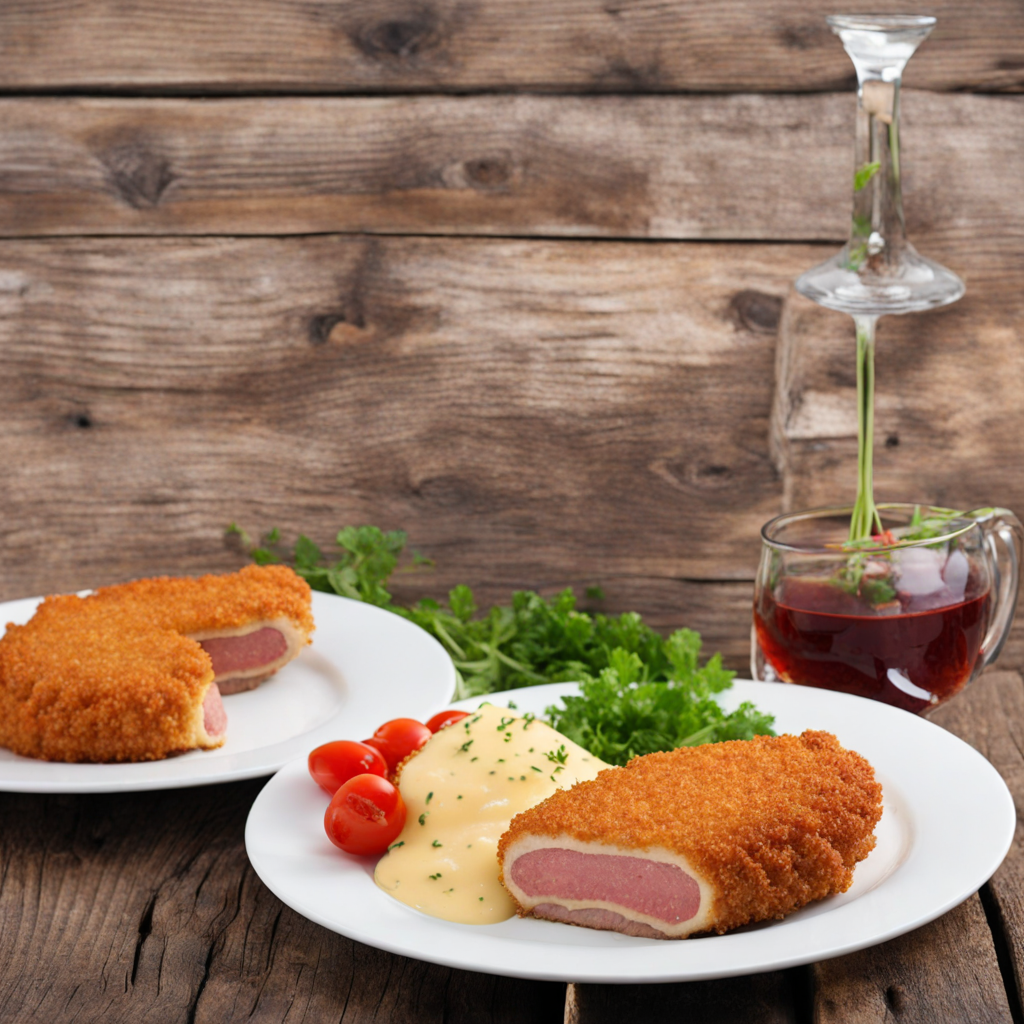Carniolan Sausage
Carniolan sausage, or "Kranjska klobasa," is a traditional Slovenian delicacy that embodies the rich culinary heritage of the region. This sausage is celebrated for its distinct flavor profile, which is primarily derived from high-quality pork, seasoned with a blend of spices such as garlic, pepper, and salt. The meat is typically coarsely ground, ensuring a hearty texture that makes each bite satisfying. Encased in a natural sheep or hog intestine, Carniolan sausage often boasts a beautifully marbled appearance, showcasing the perfect balance of lean meat and fat that contributes to its moistness and flavor. What sets Carniolan sausage apart is its unique preparation method, which traditionally involves smoking and cooking the sausage to perfection. The smoking process infuses the sausage with a deep, savory aroma that complements its seasoning, while also enhancing the overall taste experience. When cooked, the sausage develops a slightly crispy exterior, leading to a juicy and flavorful interior that bursts with the essence of the carefully selected spices. This combination of methods results in a product that is not only delicious but also rich in cultural significance, often served during festive occasions or family gatherings. Carniolan sausage is versatile in its serving styles, enjoyed both hot and cold. It can be sliced and served on a charcuterie board, paired with mustard and fresh bread, or grilled and served alongside traditional Slovenian sides such as sauerkraut or potato salad. The sausage's robust flavor makes it an excellent complement to various beverages, including local wines and craft beers. For anyone looking to explore the culinary treasures of Slovenia, Carniolan sausage offers a delightful taste experience that captures the essence of the region's gastronomic traditions.
How It Became This Dish
Carniolan Klobasa: A Culinary Journey Through Slovenia's History #### Origins and Historical Background Carniolan klobasa, known in Slovenian as "Klobasa," is a traditional sausage that hails from the picturesque region of Carniola, nestled in the heart of Slovenia. Its origins can be traced back to the early Middle Ages, a time when the Slovenian landscape was a patchwork of agricultural communities, small farms, and local markets. The region's abundant resources, including fertile soil and a diverse array of livestock, created an ideal environment for the development of artisanal meat products. The first recorded mention of the Carniolan klobasa dates back to the 19th century, although it is widely believed that the methods for making the sausage predate these references. The sausage was traditionally crafted by local farmers, who would utilize the parts of the pig that were not consumed fresh. This practice of preserving meat has deep roots in Slovenian culture, particularly among rural communities where every part of the animal was valued and utilized. #### Ingredients and Production The Carniolan klobasa is known for its simplicity and high-quality ingredients. The main components include finely minced pork, usually supplemented by bacon, garlic, salt, and a blend of spices, such as black pepper and marjoram. The use of natural casings, typically made from pig intestines, adds to the sausage's authentic texture and flavor. The production process is a labor of love; after the meat is seasoned, it is stuffed into the casings and then smoked over beechwood to enhance the flavor and preserve the sausage. This method of smoking not only contributes to the distinctive taste of the Carniolan klobasa but also reflects the historical necessity of preserving meat before the advent of refrigeration. As a result, the sausage became a staple in the diets of Slovenian families, providing nourishment during winter months when fresh produce was scarce. #### Cultural Significance Carniolan klobasa is more than just a food item; it embodies the spirit and traditions of Slovenian culture. It is often served during festive occasions, family gatherings, and local celebrations. In Slovenia, it is common to find klobasa at traditional feasts, where it is paired with sauerkraut, mustard, and hearty breads. Its presence on the table symbolizes hospitality and the importance of communal dining—a central aspect of Slovenian life. The sausage also holds a special place in the hearts of Slovenians living abroad. For many emigrants, the taste of Carniolan klobasa evokes nostalgia and a connection to their homeland. It serves as a reminder of family recipes passed down through generations, and it is often recreated in diaspora communities as a way to preserve cultural identity. In 2016, the Carniolan klobasa was officially recognized as a protected traditional specialty by the European Union, further solidifying its status as a culinary treasure of Slovenia. This designation helps to ensure that the methods of production and the quality of ingredients are maintained, safeguarding the sausage's heritage for future generations. #### Development Over Time The evolution of Carniolan klobasa has been influenced by various historical, social, and economic factors. During the Austro-Hungarian Empire, which included Slovenia, culinary practices were enriched through interaction with neighboring cultures. Ingredients and techniques from Italian, German, and Hungarian cuisines found their way into Slovenian kitchens, leading to subtle variations in the traditional klobasa recipe. These exchanges not only diversified the flavor profiles but also fostered a sense of regional pride in local specialties. In the 20th century, Slovenia underwent significant political and social changes, particularly during the Yugoslav era. The industrialization of food production altered traditional methods, and many artisanal practices were replaced by mass production. Despite this, the Carniolan klobasa remained a beloved staple, and small-scale producers continued to craft it using time-honored techniques, ensuring its survival amidst modernization. With Slovenia's independence in 1991 and its subsequent entry into the European Union in 2004, there has been a renewed interest in traditional Slovenian cuisine. Chefs and food enthusiasts have sought to revive and celebrate local culinary heritage, leading to a resurgence of traditional food items like Carniolan klobasa. This revival is evident in the growing popularity of farmers' markets, food festivals, and culinary tours that showcase the region's rich gastronomic offerings. #### Contemporary Enjoyment and Global Recognition Today, Carniolan klobasa can be found in local butcher shops, restaurants, and markets across Slovenia, where it is enjoyed by both locals and tourists alike. Its versatility allows it to be used in a variety of dishes, from hearty stews to gourmet platters. In Ljubljana, Slovenia’s capital, modern interpretations of the klobasa are often featured in trendy eateries, where chefs experiment with flavors while honoring its traditional roots. Moreover, the international food scene has begun to take notice of Slovenian cuisine, with Carniolan klobasa gaining recognition beyond its borders. Food festivals and culinary events in Europe and beyond have showcased this delectable sausage, leading to collaborations between Slovenian chefs and international culinary experts. Such initiatives highlight the importance of cross-cultural exchange in the global food landscape. #### Conclusion Carniolan klobasa is not just a sausage; it is a symbol of Slovenia's agricultural heritage, cultural pride, and culinary artistry. Its journey from humble rural beginnings to a celebrated specialty reflects the resilience and adaptability of Slovenian traditions. As the world continues to embrace local and sustainable food practices, the Carniolan klobasa stands as a testament to the value of preserving culinary history while embracing innovation. Whether enjoyed at a festive gathering, during a family meal, or as part of a gourmet experience, Carniolan klobasa remains a cherished link to Slovenia's past and an integral part of its culinary future.
You may like
Discover local flavors from Slovenia



